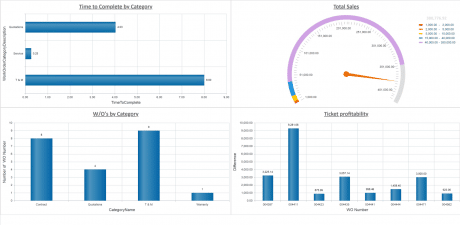Last Updated on July 17, 2023
Jan 21, 2021
Construction projects do not always go according to plan, and subcontractors need to be adaptable. Design issues, building codes, unforeseen site conditions and a host of other factors (like a pandemic) can lead to requested changes and change orders, also known as addenda or change directives. This is where the parties involved in the project agree to change the original scope of work. While a change order may in itself be small, it can have an unforeseen ripple effect that you’ll need to handle appropriately to avoid missteps in the construction process.
Why Change Orders Create Uncertainty
Changing requirements often involves changing prices, timetables, and materials. However, potential difficulties more often come from more mundane issues of logistics.
Probably the greatest issue with changes to the scope of work is simply the uncertainty that they bring. Construction projects are often fast-paced environments, and following a formal change-order process could cause enough of a delay to require sending workers home. Because of this, many subcontractors will do additional work outside their contractual obligations and assume that the project owner is operating in good faith.
Furthermore, while the original contract document should specify how a change can be made, real-world situations may not be so neat. The construction contract may stipulate that a change order must be made in writing, but legal precedent sometimes allows verbal agreements to override even an explicit written contract. As the American Bar Association notes, sometimes a verbal agreement is considered sufficient to amend a contract, even when the contract explicitly prohibits amending in that way.
Whenever you are operating without clear contractual guidelines, you run the risk of doing extra work without there being any legal obligation of getting paid. Some unscrupulous project managers may even use change orders to avoid paying you, for example, by waiting until the changed work is complete to deny the change order, forcing you to eat the cost.
Since change orders are often unavoidable, here are three ways in which you can reduce your risk:
- Clear Communication

To avoid uncertainty, communicate clearly. Avoid vague change orders and uncertain communication channels like phone calls and notes. Instead, it’s best practice to rely on clear, documented communication lines. When you cannot lose any additional time (which may be most of the time), turn to real-time communications, as long as you can document what is happening with a written change order. Having a paper trail (physical or virtual) protects you should a dispute arise later.
Unclear communication could lead to forgetting to bill additional costs related to the requested changes or forgetting to complete the changes altogether. Both scenarios could negatively impact your business either through lost revenue or damaged relationships with your customers. This is why it’s always better to be safe, with written change orders, rather than sorry.
- Realistic Costs

Failing to plan for change orders is one of the most common causes of cost overruns. When estimating the cost, it is probably safer to err on the high side and adjust down as the work is completed. This makes the final pricing feel like getting a deal rather than an unexpected bill. Laying out the costs and ramifications will help guarantee that all stakeholders are operating under the same assumptions. This might seem obvious to you, but making sure that it is obvious to everyone helps prevent conflict.
- Transparent Process

Also, make sure that you standardize how you handle change orders. Some companies may use a standard change order form or a spreadsheet for change orders. Others might rely on specialized software such as Jonas Construction Software. Whatever the process is, being transparent eliminates the guesswork.
Have clear procedures and policies for handling the results of the change, and make sure that you are upfront with your client. Changes may have unexpected consequences that could affect both the project’s cost and the amount of time needed to complete it. Setting expectations now may save you from an uncomfortable conversation down the road.
Additionally, it is crucial to define workflows for managing changes and issues. Ensure that you communicate changes to your staff, so everyone clearly understands their role in the changed work. This will ensure that you avoid a costly breach of contract and keep the construction process running smoothly.
Making Change Orders More Manageable
Change orders are a normal part of the construction industry. As much as you may try to avoid them, they are bound to happen anyway. However, change orders do not need to be prohibitively disruptive or hurt your bottom line. If you have been handling your change order management on a case-by-case basis, take some time now to work out exactly how you want to handle them going forward. This can help eliminate the guesswork for your next project. With clear policies and procedures and clear contractual obligations, you can make change orders easier and more manageable both for your company and for your client.Jonas Construction’s change order management software makes it easy to streamline your change order management from one fully-integrated dashboard. All documents, including contract change orders, are synced to the Jonas document management system. With Jonas Cloud, project managers can access these documents at any time, on the field, to make informed decisions on the go. Our software also updates subcontracts and billing and eliminates the need for duplicate entries resulting in lost revenue. Contact us to find out how Jonas Construction can revolutionize your change order management today!






